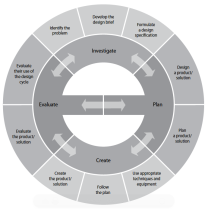 I would like to share with you an idea. We are presently having the students involved in the Primary Years Programme‘s (PYP) culminating Exhibition use the Middle Years Programme‘s design cycle (left) as a fundamental part of their process.
I would like to share with you an idea. We are presently having the students involved in the Primary Years Programme‘s (PYP) culminating Exhibition use the Middle Years Programme‘s design cycle (left) as a fundamental part of their process.
As educators we all know how important transitions are; be they between classes, horizontally across a year level curriculum or vertically across a Programme of Inquiry in the PYP. We take our students at the end of the year (or throughout if we are that organized) and let them experience the new area of the school they will be going to and arrange for them to get to know their new teachers a bit.
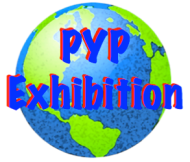 Now, I spent seven years learning my way around the PYP and have acted as a mentor for the exhibition numerous times. As the technology coach for teachers in grades 1-12 and the MYP Technology teacher in my present position I was approached by the grade five team asking how I could support them with some sort of video production for this year’s efforts.
Now, I spent seven years learning my way around the PYP and have acted as a mentor for the exhibition numerous times. As the technology coach for teachers in grades 1-12 and the MYP Technology teacher in my present position I was approached by the grade five team asking how I could support them with some sort of video production for this year’s efforts.
I would like to share with you just how we are going about this. I hope you may find an idea or suggestion here that can be of use to you. If you improve upon anything I ask only that you post me a comment to share. This blog is all about sharing though sometimes it feels a little one-sided.
The Initial Idea
We kicked around a few ideas, as is often the manner of the creative process with these things, before settling on the idea of having the students produce a video sharing their journey and explaining their process throughout the exhibition. We identified what we felt were the fundamental components and decided to lay the video story map out for the students. If you have any experience with a PYP exhibition you will understand that the students have enough to do already without having to learn the entire film-making process from scratch on top of it!
The Front Loading of Skills
Speaking of learning film-making…
We had arranged previously to front load some digital storytelling skills including story boarding, narration and video production as part of the unit just prior to the exhibition. Can you say horizontal planning? Sure you can.
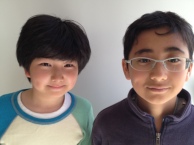 This is an example of what two of our G5 students completed in just a few sessions with no prior knowledge of Windows Movie Maker. Now Riku & Jun may not win any awards for this work yet and yes, for you techies out there, the level of sophistication in terms of technology deployed is not exceptional, however, they did:
This is an example of what two of our G5 students completed in just a few sessions with no prior knowledge of Windows Movie Maker. Now Riku & Jun may not win any awards for this work yet and yes, for you techies out there, the level of sophistication in terms of technology deployed is not exceptional, however, they did:
- Make a compelling argument
- Use transitions effectively
- Narrate their work in an evenly paced and appropriate tone and volume
- Incorporate (and cite) creative commons licensed images and a soundtrack
- Resist the temptation to animate everything under the sun
Now I may be biased as one of their teachers but this is better than I often see colleagues pull off and they did it on their second (publishing) try (after the initial public viewing begging for the chance to make improvements). How much better will their PYP Exhibition Chronicle be for having had the chance to do this before even having the project put to them?
The Role of the Design Cycle
Now, where does the design cycle fit in? As the students are very much left up to their own devices to complete the considerable undertaking that is “THE EXHIBITION”, we supply them with supporting documents. In the case of this year’s exhibition they are receiving:
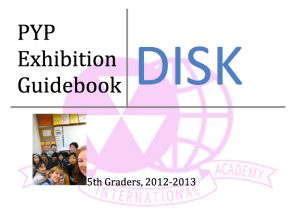 An exhibition packet outlining the exhibition for student reference (Great stuff Freya!)
An exhibition packet outlining the exhibition for student reference (Great stuff Freya!)- A digital storytelling handbook with the aforementioned story map for their process video
- The BIG PROJECT booklet (below) for executing the necessary research, planning and creating of their proposed green company through the Design Cycle.
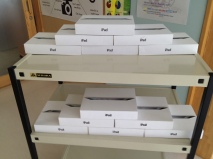 The Generosity of Apple Japan
The Generosity of Apple Japan
To better resource our efforts we approached Apple Japan with a request for some iPad Loaners. Happily, we received them the very day we were set to present the exhibition to the students and parents. I shall have to write a follow up blog post on my efforts to employ iTunes U a s delivery platform.

Bookmarking this for next year! Thanks for sharing Sean!
I’m highly admirative of your active involvement and great initiative in bringing a specialist perspective to the exhibition arena! This is a true show of engaging students in skills acquisition for greater leaning. I’m keen to get more info on how you go about integrating ICT throughout your POI
Well thank you. For me it’s all about meaningful connections and collaborative learning.
Pingback: Educational Material Development | Technology Embedded: Living, Learning, Teaching